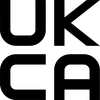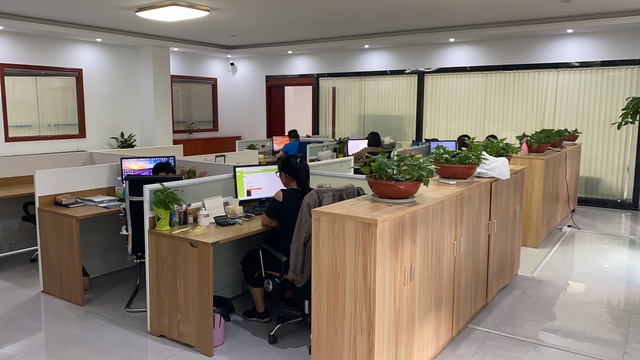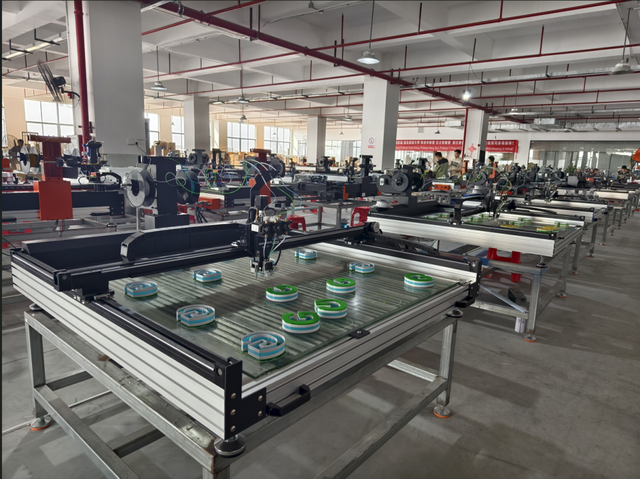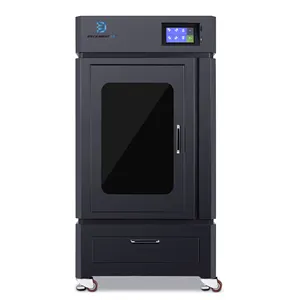Rocket Lab 3d Printing



















































About rocket lab 3d printing
Where to Source Rocket Lab 3D Printing Equipment Suppliers?
China remains a dominant hub for industrial 3D printing systems, particularly those aligned with aerospace and advanced manufacturing applications. Key suppliers specializing in high-precision metal additive manufacturing are concentrated in industrial centers such as Suzhou, Guangzhou, and Xiamen. These regions host vertically integrated production ecosystems that support rapid development of large-format DMLS/SLM (Direct Metal Laser Sintering/Selective Laser Melting) machines used in rocket component fabrication.
Suppliers in Suzhou and Guangzhou focus on heavy-duty metal 3D printers with build volumes exceeding 800 mm and laser power outputs suitable for aerospace-grade alloys like Inconel 718 and Ti-6Al-4V. These facilities benefit from proximity to R&D hubs and aviation supply chains, enabling tighter integration with engineering teams. Meanwhile, coastal cities like Xiamen emphasize customization and modular design, offering scalable desktop and mid-range systems adaptable to prototyping environments relevant to space technology labs.
The clustering effect enables cost efficiencies through localized access to optical components, powder handling systems, and vacuum chamber manufacturers. Lead times for standard industrial units typically range from 45–60 days, with some suppliers reporting on-time delivery rates above 98%. Buyers gain access to mature technical infrastructures where firmware development, mechanical assembly, and post-processing validation occur within consolidated facilities.
How to Evaluate Rocket Lab 3D Printing Equipment Suppliers?
Selecting qualified partners requires rigorous assessment across technical, operational, and transactional dimensions:
Technical Capability Verification
Confirm equipment specifications align with aerospace-grade requirements: minimum laser precision of ±0.02 mm, inert gas-controlled build chambers (oxygen levels <100 ppm), and compatibility with nickel-based superalloys. Demand documentation of layer resolution, scan speed, and thermal management performance. For mission-critical components, verify compliance with AS9100 or ISO 9001 standards.
Production Infrastructure Audit
Assess supplier capacity based on the following benchmarks:
- Facility size supporting dedicated R&D and testing zones
- In-house machining capabilities for recoater systems and build plate calibration
- Integration of real-time melt pool monitoring and closed-loop feedback controls
Cross-reference online revenue data and reorder rates as proxies for market validation—suppliers with reorder rates exceeding 30% indicate sustained customer satisfaction.
Procurement Risk Mitigation
Utilize secure payment mechanisms such as escrow services until equipment performance is verified post-delivery. Prioritize suppliers with sub-5-hour response times and documented after-sales support protocols. Request sample parts printed with your specified material parameters to evaluate dimensional accuracy and surface finish before full-scale procurement.
What Are the Leading Rocket Lab 3D Printing Equipment Suppliers?
| Company Name | Main Products | Price Range (USD) | Min. Order | On-Time Delivery | Avg. Response | Reorder Rate | Online Revenue |
|---|---|---|---|---|---|---|---|
| Suzhou Tianhong Laser Co., Ltd. | Large-format DMLS/SLM metal 3D printers | $103,900–$850,000 | 1 piece | 100% | ≤4h | 50% | US $170,000+ |
| Xiamen Antinsky Industry Co, Ltd. | Desktop resin, FDM, ceramic 3D printers | $189–$14,999 | 1 piece | 100% | ≤5h | 34% | US $1,100,000+ |
| Guangzhou Rising Dimension Trading Co., Ltd. | Industrial FGF, FDM, and diecast-compatible 3D printers | $1,399–$850,000 | 1 piece | 100% | ≤1h | <15% | US $3,000+ |
| Jiangxi New Silk Road Industry & Trade Company Limited | LCD/MSLA, delta, and enclosed FDM printers | $340–$4,502 | 1 unit | 98% | ≤4h | 28% | US $210,000+ |
| Zhejiang Flashforge 3d Technology Co., Ltd. | FDM, automatic leveling, high-speed portable printers | $299–$399 | 1 unit | 94% | ≤1h | 16% | US $40,000+ |
Performance Analysis
Suzhou Tianhong stands out for its specialization in aerospace-grade metal 3D printing, offering systems priced up to $850,000 with a strong reorder rate of 50%, indicating high client retention among industrial users. The company’s TH-M800 series supports NASA-level part production, featuring full DMLS/SLM integration and large build envelopes suitable for rocket engine injectors and combustion chambers. Xiamen Antinsky demonstrates broad product adaptability, serving both research and educational markets with lower-cost resin and ceramic platforms while maintaining high transaction volume. Guangzhou Rising Dimension offers niche capabilities in fiber-grain fusion (FGF) technology, though its low reorder rate suggests limited repeat adoption. Flashforge and Jiangxi New Silk Road cater primarily to entry-level prototyping needs, with compact systems more suited for lab-scale simulation than flight hardware production.
FAQs
How to verify supplier capability for aerospace 3D printing?
Request proof of prior work with certified aerospace components, including build logs, post-processing records, and non-destructive testing reports. Confirm whether the machine supports HIP (Hot Isostatic Pressing)-ready output and has been validated for AMS (Aerospace Material Specifications) compliance.
What is the typical lead time for industrial 3D printers?
Standard delivery ranges from 45 to 60 days after order confirmation. Custom configurations involving dual-laser setups or specialized gas recycling systems may extend timelines to 90 days. Air freight adds 7–10 days globally; sea shipping takes 25–35 days depending on destination port.
Do suppliers offer customization for rocket-specific applications?
Yes, leading suppliers provide tailored solutions including enhanced cooling systems, extended Z-heights, and multi-material deposition heads. Engineering collaboration is common for clients requiring qualification under NADCAP or ITAR frameworks. Video facility tours and remote diagnostics are available to validate customization workflows.
Are samples available for evaluation?
Most suppliers offer test prints using customer-specified geometries and materials. Sample costs vary—typically covering 30–50% of production expenses unless offset by future orders. Full system trials are negotiable under lease-to-purchase agreements for high-value equipment.
Can these 3D printers produce flight-certified rocket components?
Only select models from suppliers with traceable quality management systems (e.g., ISO 9001, AS9100) can be used in flight-part qualification. Achieving certification requires additional process validation, including build repeatability studies, powder lot tracking, and third-party metallurgical analysis. Suppliers should provide open API access for integrating internal QA software.























































































































